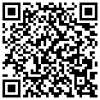Multifaceted Amblyopia Screening with blinq, 2WIN, and PDI Check
- PMID: 35210746
- PMCID: PMC8858021
- DOI: 10.2147/OPTH.S349638
Multifaceted Amblyopia Screening with blinq, 2WIN, and PDI Check
Abstract
Background: Novel devices target different facets of amblyopia risk factors (ARFs). Through birefringence, the Rebion blinq assesses binocular foveation. The Adaptica 2WIN is a multiradial infrared photorefractor that also estimates ocular alignment. PDI Check is a forced-choice, dynamic near-vision game for the autostereoscopic Nintendo 3DS.
Methods: New and returning patients to a pediatric ophthalmology clinic had concomitant confirmatory exams after all three vision screens had been validated with ROC curves, Bland-Altman plots, and Alaska Blind Child Discovery ellipsoid grades. Exam outcomes were classified by ARF visual acuity, strabismus, binocularity, and refractive errors following the 2021 AAPOS guidelines and Bosque-Hunter rubric for the blinq.
Results: A total of 202 ethnically diverse students aged 10±4 (4-19) years, 33% treatment-naïve, had a high (58%) prevalence of ARFs. Linear logMAR visual acuity, intereye differences, stereo and three-cone color correlated well between PDI Check and exams. Mean score on the 2WIN matched sphero-cylinder exam with ellipsoid scoring was 2.1±1.5. For AAPOS 2021 refractive plus strabismus, sensitivity/specificity for PDI Check was 68%/59%, 2WIN 72%/95%, and blinq 87%/32%. For the amblyopia or strabismus rubric, PDI Check was 79%/68%, 2WIN 56%/65%, and blinq 94%/37%.
Conclusion: Each device had advantages and disadvantages in screening this cohort of older, high-prevalence students, many of whom had already been treated. Validation methods should cover more than just refraction, as the new 2021 AAPOS guidelines do.
Keywords: amblyopia; strabismus; validation; vision screening.
© 2022 Arnold and Angi.
Conflict of interest statement
Dr Arnold is a board member of PDI Check and Glacier Medical Software. He coordinates Alaska Blind Child Discovery, which has received discounted vision-screening technology from several vendors. He is an unpaid member of advisory boards for PlusoptiX, Adaptica, GoCheck Kids, iScreen, and NovaSight. He and Alex Damarjian have a patent for PDI Check pending. Dr. Angi has no financial conflicts to disclose. The authors have no other conflicts of interest in this work.
Figures





Similar articles
-
Pediatric Non-Refractive Vision Screening with EyeSwift, PDI Check and Blinq: Non-Refractive Vision Screening with Two Binocular Video Games and Birefringent Scanning.Clin Ophthalmol. 2022 Feb 11;16:375-384. doi: 10.2147/OPTH.S344751. eCollection 2022. Clin Ophthalmol. 2022. PMID: 35177896 Free PMC article.
-
Comparative AAPOS Validation of the Birefringent Amblyopia Screener with Isolated Small-Angle Strabismus.Clin Ophthalmol. 2020 Jan 31;14:325-329. doi: 10.2147/OPTH.S242335. eCollection 2020. Clin Ophthalmol. 2020. PMID: 32099317 Free PMC article.
-
Drive-by Photoscreening: Plusoptix, 2WIN and Blinq Amblyopia Detection During the COVID-19 Pandemic.Clin Ophthalmol. 2021 Feb 23;15:775-782. doi: 10.2147/OPTH.S300871. eCollection 2021. Clin Ophthalmol. 2021. PMID: 33654376 Free PMC article.
-
Instrument Referral Criteria for PlusoptiX, SPOT and 2WIN Targeting 2021 AAPOS Guidelines.Clin Ophthalmol. 2022 Feb 25;16:489-505. doi: 10.2147/OPTH.S342666. eCollection 2022. Clin Ophthalmol. 2022. PMID: 35250260 Free PMC article.
-
Calibration and validation of the 2WIN photoscreener compared to the PlusoptiX S12 and the SPOT.J Pediatr Ophthalmol Strabismus. 2014 Sep-Oct;51(5):289-92. doi: 10.3928/01913913-20140701-01. Epub 2014 Jul 8. J Pediatr Ophthalmol Strabismus. 2014. PMID: 25000209
Cited by
-
Comparative Validation of PlusoptiX and AI-Optic Photoscreeners in Children with High Amblyopia Risk Factor Prevalence.Clin Ophthalmol. 2022 Aug 16;16:2639-2650. doi: 10.2147/OPTH.S378777. eCollection 2022. Clin Ophthalmol. 2022. PMID: 35996434 Free PMC article.
-
Validation of the Affordable, Portable International Visionkeys System for Visual Acuity and Stereopsis.Clin Ophthalmol. 2024 Dec 10;18:3667-3677. doi: 10.2147/OPTH.S494457. eCollection 2024. Clin Ophthalmol. 2024. PMID: 39676769 Free PMC article.
-
Agreement and repeatability of scotopic pupil size measurement with the 2WIN-S portable refractor in Chinese adults.Sci Rep. 2024 Jul 8;14(1):15650. doi: 10.1038/s41598-024-66540-w. Sci Rep. 2024. PMID: 38977905 Free PMC article.
References
-
- Wu C, Hunter DG. Amblyopia: diagnostic and therapeutic options. Am J Ophthalmol. 2006;141(1):175–184. - PubMed
-
- Leman RE, Clausen MM, Bates J, Stark L, Arnold KK, Arnold RW. A comparison of patched HOTV visual acuity and photoscreening. J Sch Nurs. 2006;22(4):237–243. - PubMed
-
- Hunter D, Cotter S. Early diagnosis of amblyopia. Vis Neurosci. 2018;35:E013. - PubMed
LinkOut - more resources
Full Text Sources
Medical

